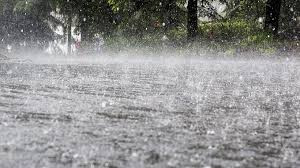
IN a statement released by the Southern Africa Regional Climate Outlook Forum (SARCOF) in January this year, it was projected that between April and June 2025, many countries in the region will experience heavy rains, with some areas recording above-average precipitations.
This projection came on the back of a below-average rainfall season between October and December 2024, traditionally the main rainy and planting season for most countries in the region.
These conditions have cast doubt on the ability of many rural farmers to recover, particularly after enduring the severe drought caused by the El Niño phenomenon during the 2023–24 season. That drought plunged the region into one of its worst food insecurity crises.
Although some rains were received between January and February 2025, the dry and warm conditions from October to December had already caused significant damage to food crops in several parts of the region. Meaningful rains began to fall in March, intensifying into April. This was in line with projections of increased probability of above-normal rainfall across South Africa, Lesotho, Eswatini, Mozambique, Malawi, Zambia, Zimbabwe, the Mozambican channel and Madagascar.
Overall, weather and climate experts have indicated that there is clear evidence of a shift in the rainy season in southern Africa, with a trend towards a late start and a shorter duration in some areas. While the shift is not uniform across the entire region, with some areas potentially experiencing longer rainfall seasons and others shorter, the implications for agriculture, water management and the frequency of extreme weather events are profound.
Climate change is gradually altering the location of large-scale climate systems and their moisture corridors, contributing to these shifts in rainfall seasonality. These changes are already impacting agriculture and water resources and demand new strategies for managing rain-fed agriculture and water use.
Given that most of the population in southern Africa relies on rain-fed agriculture, concerns about these seasonal shifts — and how they are managed — are rising.
First, while the current rains are beneficial for refilling water reservoirs across the region, they are also causing damage to crops, particularly those that survived the earlier dry conditions and had reached the harvesting stage. The period between March and May was traditionally the harvesting season, but it is now increasingly turning into a wet period, complicating agricultural cycles.
- When the rains move, rural farmers must stay ahead
Keep Reading
Second, many rural farmers, who planted during the traditional October–December window, have suffered crop failures due to the dry conditions. They now face additional challenges, even with the late rains, and may require substantial support. Given that this is the second consecutive poor planting season, recovery is likely to be slower and more difficult than usual.
Third, although climate and weather services have made significant improvements in forecasting, much of this information has not effectively reached the rural farmers who need it most. A major reason for the heavy losses this season is lack of access to timely, accurate information on rainfall projections and planting advice. Public awareness campaigns on the shifting rainfall patterns, particularly the timing and duration of the rainy season, are critical for future agricultural success.
Fourth, there is now an urgent need to encourage rural farmers to make greater use of winter farming, taking advantage of the late rains to secure some harvests. Without this adjustment, the region could face another poor harvest season — not for lack of rainfall, but due to a gap in communication, timing and planning.
Finally, to help rural farmers cope with a shifting rainy season, there must be a strong focus on building resilience. This includes improving access to drought-tolerant seeds, efficient irrigation systems, climate risk insurance and extension services that promote the adoption of climate-smart agricultural practices. Policy interventions should also prioritise early warning systems for extreme weather events, disaster preparedness and biodiversity conservation.
It is now critical to emphasise to rural farmers that it is no longer business as usual. Climate change and its hazards are here to stay — and their impacts are increasing and intensifying. The only viable path forward is adaptation: adopting new coping mechanisms, building resilience and embracing innovative practices as essential steps towards reducing vulnerability.
The time for reactive measures has passed. There is an urgent need to act with foresight and determination. Governments, their partners and community leaders must work hand-in-hand to ensure that rural farmers — the backbone of southern Africa’s food security — are equipped with the tools, knowledge and the support they need to survive and thrive in a changing climate.
Investment must be directed towards climate-resilient agriculture, expanding access to timely weather information and building systems that safeguard livelihoods against future shocks. The future of the region’s food security, economies and ways of life depends on the decisions made today. It is time to choose resilience. It is time to choose action. It is time to act — now.










